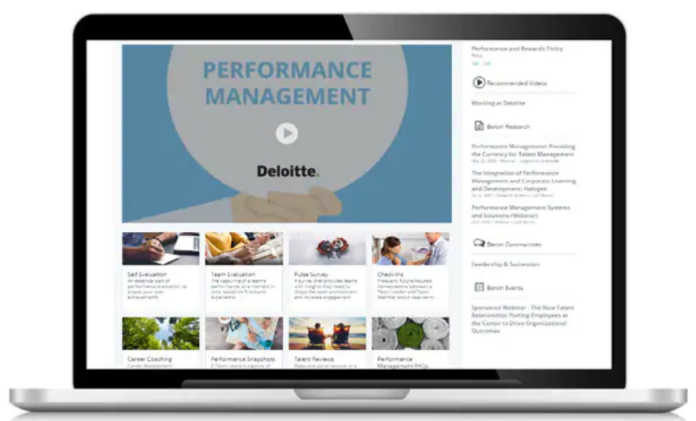
Bill Docherty is managing director and general manager of Deloitte’s ConnectMe, a cloud-based HR and engagement platform. We discussed the growing use of such technology as organizations seek to enhance the employee experience.
What are “interactional platforms,” and how can they improve on today’s engagement and communications technology?
Interactional platforms—or as we call them at Deloitte, digital workplaces—are a solution for engaging employees in all the services they have available to them from their organization. When done correctly, these platforms simplify the workplace experience and increase HR effectiveness while improving employee engagement.
"Tools like email and video messages are great and aren’t going anywhere, but they may not be the best choice, or only choice, for communicating" with employees. #HR #HRTech @Deloitte Share on XFor example, these platforms integrate with other HR systems to provide information, transactions and support in a single user experience. Communications can be personalized and automated based on the employee. That cuts down on all the noise that often comes with mass emails, which don’t resonate with the employee.
How would the ideal interactional platform work?
Digital workplaces offer employees a one-stop shop for all things HR. Users can access the platform remotely, from any device, to check things like PTO balance, benefit options and learning. They can initiate two-way communication between themselves and their managers around what we call “moments that matter.” Those are things like getting married, taking medical leave or relocating.
The platforms improve employee engagement by enabling employees to communicate, collaborate and make HR decisions on-demand. Plus, their personalized dashboard removes the need to access multiple systems for information.
We believe digital workplaces should provide employees with a consumer-grade experience. They should be able to:
- Use insights and analytics to provide predictive, personalized and guided HR interaction.
- Protect employees and managers from having to navigate multiple HR systems.
- Promote more collaborative relationships between employees and HR.
- Offer convenience and choice to access and complete HR tasks through on-demand capabilities.
- Facilitate communication using chat and community features.
What’s the state of this technology today?

It’s emerging technology with solutions arising from several heritages. There are solutions like our ConnectMe, which are built specifically from the outset for this purpose. There are general purpose intranet platforms that are altered to focus on employee engagement, and there are HCM or IT service-management solutions that try to move beyond transactional processes and into employee self-service.
The most mature platforms integrate machine learning and interaction analytics to optimize employee self-service and enable continuous process improvement. These solutions allow HR organizations to minimize transactional interactions and focus on more strategic initiatives.
Are there any particular dynamics that you believe will spur their adoption?
Today’s workforce dynamics require this type of technology, and organizations are still catching up to the demand. Today’s digital workforce demands access to information that is predictive, personalized and easily accessible. For example, [a Guardian Workplace study found] 3 in 5 millennials wish it were easier to learn about and access their workplace benefits.”
If a company isn’t providing technical benefits like mobility, ease of use and self-service, then top talent is likely to seek other jobs that meet their digital expectations. Digital HR is no longer just a nice to have. It has become essential to keep employees engaged in their organizations and careers.
Much of the talk surrounding HR tech today is focused on tools like AI-powered chatbots. How do you square the need for closer communications with the increasing use of technology to do it? To be truly personal, shouldn’t the process be more, well, human?
Workforce communications is much more than just email, like many people assume. Applying a thoughtful, researched and data-backed strategy to communications means finding the balance of what works within an organization’s culture. Sure, tools like email and video messages are great and aren’t going anywhere, but they may not be the best choice, or only choice, for communicating.
Some employees may prefer using a chatbot to calling an HR rep, while others want to have a live conversation. Digital HR platforms can help automate communications where it makes sense, limit the volume of communications by tailoring them by employee or topic, and offer choices of how employees can interact with their organization. For example, the Guardian Workplace study said “42 percent of Millennials and 26 percent of Baby Boomers use artificial intelligence, such as their Alexa or Google home device, to ask benefits or health-related questions.”
Our latest Bersin research on high-impact HR organizations found that 25 percent are using chatbots, while 20 percent are using virtual assistants. Still another 20 percent said they plan to implement virtual assistants within the next two years. By freeing itself up to focus on people and strategic initiatives, HR can dedicate more time to having conversations with those who want to have them—making the process more human by automating tasks that HR previously had to handle manually.
Is there any other point you’d like to make?
It’s important to remember that a mature digital workplace is just one part of the journey to provide an engaging employee experience and optimized HR operation. The HR transformation experience and pre-built content can accelerate the deployment and adoption of an interactional platform. From there, HR teams should analyze data from their digital workplace platforms on an ongoing basis to continue improving the experience for employees.
Sign up for our newsletter here.
Image: Deloitte














